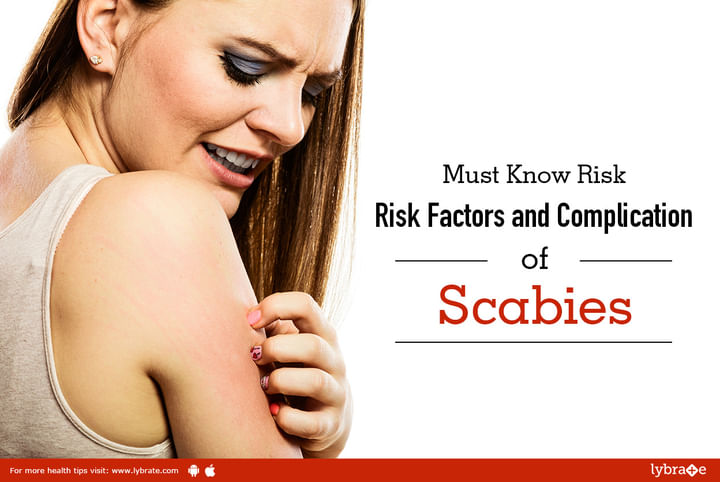Must Know Risk Factors and Complication of Scabies
Scabies is a type of skin conditions that causes itching and rashes. This dermatological condition is caused by Sarcoptes scabiei, a microscopic mite. It is a contagious condition, which can spread through physical contact. An estimate shows that scabies infects over 300 million people worldwide per year.
This eight-legged microscopic mite creates a tunnel in the human skin and lays eggs in it. These larvae move under the surface of the skin and spread across the whole body, once hatched. Dogs, cats, and mice can also be affected by this disease. It usually takes 2-6 weeks for the symptoms to develop. Signs and symptoms of scabies involve itching, rashes, sores and thick crusts on the surface of the skin.
Some of the risk factors of scabies are:
- Scabies spreads through direct, prolonged skin-to-skin contact with a person who has mites.
- An infected person can easily pass scabies to his/her household or sexual partners. Scabies in adults is usually sexually acquired.
- The likelihood of scabies increases easily under crowded conditions, which involve close body and skin contact. Nursing homes, prisons, and several types of care facilities are sites of scabies outbreaks.
- Immunocompromised, elderly and disabled people also suffer from an increased likelihood of contracting this skin condition.
Complications of scabies include:
- Persistent and vigorous scratching can break the surface of your skin, which can lead to secondary bacterial infections. Impetigo, a superficial infection, is a quite common occurrence in such cases.
- Crusted scabies, the most severe form of scabies, can be common in certain groups. People suffering from diseases such as HIV or leukemia who have weakened immune systems as well as severely ill people have high risks of contracting this condition. This condition, also known as Norwegian scabies, is very contagious and also hard to cure.
'Consult'.
Tip: Top 6 things that revive acne prone skin



+1.svg)
